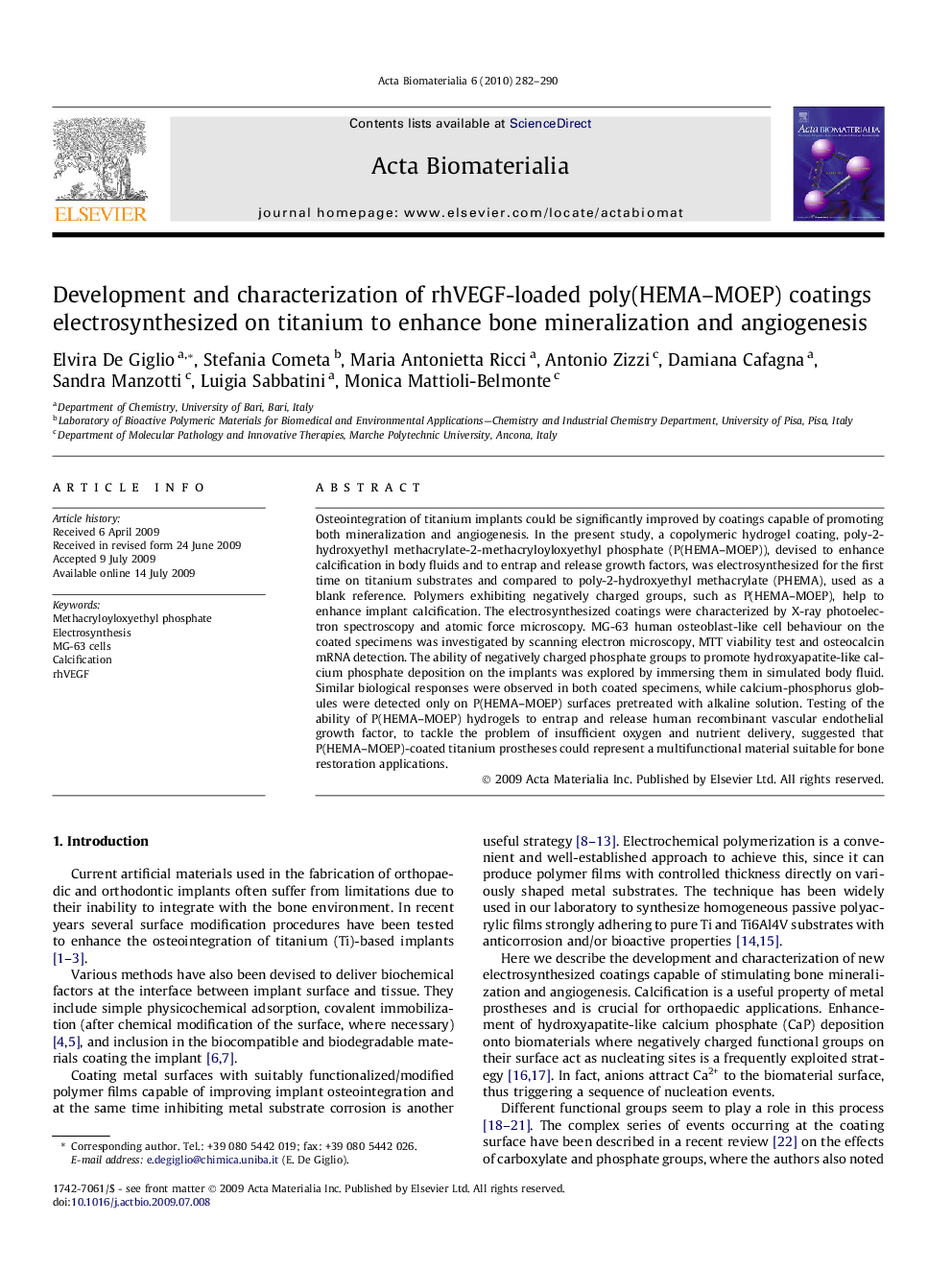| Article ID | Journal | Published Year | Pages | File Type |
|---|---|---|---|---|
| 10160408 | Acta Biomaterialia | 2010 | 9 Pages |
Abstract
Osteointegration of titanium implants could be significantly improved by coatings capable of promoting both mineralization and angiogenesis. In the present study, a copolymeric hydrogel coating, poly-2-hydroxyethyl methacrylate-2-methacryloyloxyethyl phosphate (P(HEMA-MOEP)), devised to enhance calcification in body fluids and to entrap and release growth factors, was electrosynthesized for the first time on titanium substrates and compared to poly-2-hydroxyethyl methacrylate (PHEMA), used as a blank reference. Polymers exhibiting negatively charged groups, such as P(HEMA-MOEP), help to enhance implant calcification. The electrosynthesized coatings were characterized by X-ray photoelectron spectroscopy and atomic force microscopy. MG-63 human osteoblast-like cell behaviour on the coated specimens was investigated by scanning electron microscopy, MTT viability test and osteocalcin mRNA detection. The ability of negatively charged phosphate groups to promote hydroxyapatite-like calcium phosphate deposition on the implants was explored by immersing them in simulated body fluid. Similar biological responses were observed in both coated specimens, while calcium-phosphorus globules were detected only on P(HEMA-MOEP) surfaces pretreated with alkaline solution. Testing of the ability of P(HEMA-MOEP) hydrogels to entrap and release human recombinant vascular endothelial growth factor, to tackle the problem of insufficient oxygen and nutrient delivery, suggested that P(HEMA-MOEP)-coated titanium prostheses could represent a multifunctional material suitable for bone restoration applications.
Related Topics
Physical Sciences and Engineering
Chemical Engineering
Bioengineering
Authors
Elvira De Giglio, Stefania Cometa, Maria Antonietta Ricci, Antonio Zizzi, Damiana Cafagna, Sandra Manzotti, Luigia Sabbatini, Monica Mattioli-Belmonte,
